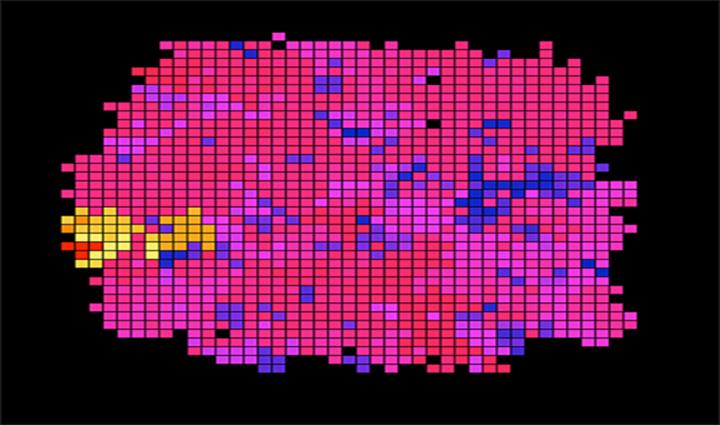
Credit: Courtesy of MSU
EAST LANSING, Mich. – Just as species evolve, so do classes.
Michigan State University researchers have improved an introductory biology class to make it more accessible for students not majoring in life sciences.
The new course, "Integrative Biology: From DNA to Populations," features Avida-ED, a digital evolution software program that allows populations of digital organisms, aka Avidians, to undergo actual, not simulated, evolutionary change.
In the past, teaching of evolutionary concepts often involved evolution found in the fossil record or similarities in DNA sequences, anatomical structures and embryos. Because Avidians evolve at near lightspeed, unscientifically speaking, students can observe, record and experiment upon evolutionary change.
"Integrating Avida-ED into the new class provides a novel approach to engage engineering students, and other students not majoring in life sciences, in biological concepts within a computational environment," said Louise Mead, lead author and education director for MSU's BEACON Center for the Study of Evolution in Action. "Seeing evolution come alive through the digital program allows the students to engage with biology within a context that is familiar and interesting."
STEM education reform stresses the importance of having a solid foundation of science fundamentals and the development of science and engineering practices. To address this concern, Mead worked with Cory Kohn, MSU graduate student and co-author, and a team of MSU scientists to create the new, semester-long course with Avida-ED at its core.
With the help of Avida-ED, students can design their own experiments to see how mutation rates affect evolutionary outcomes. They also can tackle lofty topics and compare the benefits of natural selection, changes driven primarily by reproductive success, to genetic drift, changes that are the result of chance.
Students who have taken the course have already shown an increased capacity in understanding evolution-influenced topics, such as antibiotic resistance and how bacteria are evolving to become multidrug resistant.
"We've developed materials that any instructor can use, and because it's digital evolution software, it's in a format that is familiar to engineering students and makes it easier for them to grasp the concepts," Mead said. "Our data shows that this approach is reducing student anxiety and allowing them to enjoy the course more."
The course and the creation of Avida-ED was funded in part by the National Science Foundation and the Howard Hughes Medical Institute. And it goes without saying that the software and course will continue to evolve. In addition, the Avida-ED team continues to offer instructor training workshops during the summer for anyone interested in learning more about the program.
The next iteration will allow students to ask more questions, conduct broader experiments and even delve into ecological concepts. Soon they'll be able to peak into the forces shaping complex patterns of genetic variation between individuals, populations and species.
Harnessing the collective power of life sciences, engineering and education to address complex issues is one of the hallmarks of the BEACON Center, Mead said.
"With our new class, we can train engineering students to become comfortable with evolutionary biology, and they in turn, become more open to working with biologists and perpetuating interdisciplinary research," she said. "The support that MSU and BEACON give to interdisciplinary research is unparalleled. We have the freedom to identify the research concepts, and they give the added funded necessary to properly research it."
###
The paper appears in the current issue of Computer Applications in Engineering Education. Other MSU scientists contributing to this study include: Michael Wiser, Robert Pennock and James Smith.
Michigan State University has been working to advance the common good in uncommon ways for 160 years. One of the top research universities in the world, MSU focuses its vast resources on creating solutions to some of the world's most pressing challenges, while providing life-changing opportunities to a diverse and inclusive academic community through more than 200 programs of study in 17 degree-granting colleges.
For MSU news on the Web, go to MSUToday. Follow MSU News on Twitter at twitter.com/MSUnews.
Media Contact
Layne Cameron
[email protected]
517-353-8819
@MSUnews
http://msutoday.msu.edu/journalists/
Original Source
http://go.msu.edu/9YH





